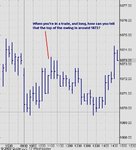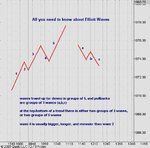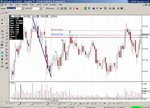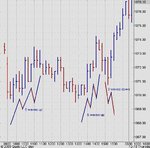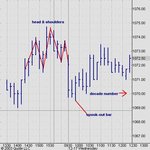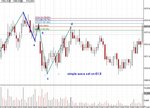On the subject of indicators though, consider this:
Most of these indicators such as RSI, Stoch's MACD.... were developed in the 70'2 & 80's when computing power gave one an edge against those not using computers. Therefore any trader using the indicators was the minority. Now, everyone has access to computers and these indicators, so the tables have turned. Thats why the successful trader is fading the trades of those traders who do use them.
The successful trader adapts to the market, rather than trying to trade a 20 year old concept that the others are now fading.
Nothing can compensate for understanding what is going on in a chart looking at just price, volume and an understanding of volatility. Trying to decipher this information by filtering out 'noise' (read valuable information!), or understand it with a smoothed 13 bar RSI offset x periods is lazy - and if you think laziness is the road to riches, then please keep trading - your money is most welcome!
Most of these indicators such as RSI, Stoch's MACD.... were developed in the 70'2 & 80's when computing power gave one an edge against those not using computers. Therefore any trader using the indicators was the minority. Now, everyone has access to computers and these indicators, so the tables have turned. Thats why the successful trader is fading the trades of those traders who do use them.
The successful trader adapts to the market, rather than trying to trade a 20 year old concept that the others are now fading.
Nothing can compensate for understanding what is going on in a chart looking at just price, volume and an understanding of volatility. Trying to decipher this information by filtering out 'noise' (read valuable information!), or understand it with a smoothed 13 bar RSI offset x periods is lazy - and if you think laziness is the road to riches, then please keep trading - your money is most welcome!

